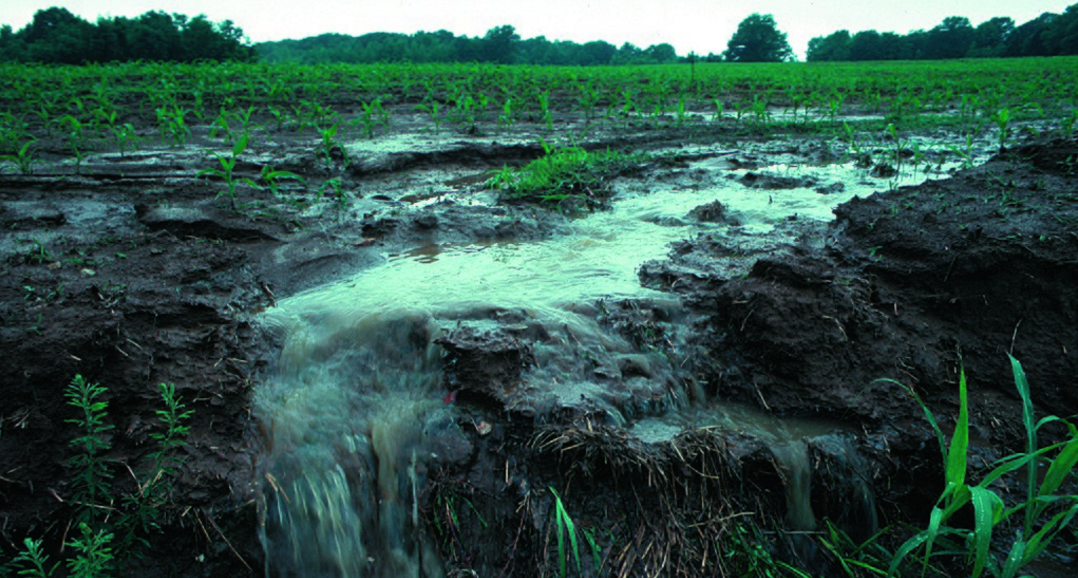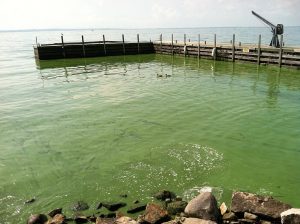
Algae isn’t always a bad thing says Jon Allan.
As Director of the Michigan Office of the Great Lakes since 2012, with more than 30 years of experience in environmental and energy policy, Allan has seen many forms of algae and its impact on water quality.

Jon Allan,Director of the Office of the Great Lakes, courtesy of mi.gov
He has presided over the Great Lakes when algae became so toxic there was a “Do Not Drink” advisory for more than 500 thousand people in four counties in Ohio and Michigan in 2014.
Allan has also seen improvements– especially in Lake Erie –due to changes in agriculture practices prompted by The Great Lakes Restoration Initiative.
But Allan says, “How effective have these programs been in long term nutrient reduction?”
That’s the question Allan says he hopes will be answered by a $750,000 award given to the Great Lakes Commission through the Environmental Protection Administration.
An interdisciplinary team of researchers and practitioners from Michigan State and Ohio State University will lead the 24-month project that will determine whether Great Lakes Restoration Initiative (GLRI) investments have influenced how farmers are conducting their agricultural operations.

Sediment in a waterway that has washed from nearby crop fields in Iowa, courtesy of NRCS
Allan explains that sediment and nutrients from agricultural fields contribute to water quality degradation in rural areas and serve as a major contributor to the formation of harmful algal blooms and dead zones in the Great Lakes.
Allan tells Great Lakes Now, “Algae in and of itself is generally a pretty good thing. Green algae, in particular, forms the basis of a lot of food chains. It’s photo-synthetic. It gathers sunlight; it grows plants, and it’s used by all sorts of organisms. Where it becomes a problem is when algae overgrows and becomes hypertrophic – it grows too much.”
That’s what happened in Lake Erie in 2014 – and where the famous, neon-green slimy algae photos come from.
Allan says, “You shift from green algae to something called blue-green algae. And blue- green algae shows up. That’s often what we call harmful because blue-green algae can give off a toxin into the water column. It over-blooms and overdevelops. And it becomes toxic in large volumes in these hyper-growing heavily nutrient-enriched environments.”
That’s why getting farmers and others who might be responsible for allowing fertilizer to get into the water to change their behavior is all-important in the fight for the health of the Great Lakes.
And it isn’t just about the potential impact of toxic algae blooms on drinking water for more almost 50 million people.

Algal bloom in Lake Erie, Kelley’s Island, courtesy of NOAA
In the case of Lake Erie in 2014, the phosphorous created a poisonous algae called “microcystin” with the potential to cause diarrhea, vomiting, and liver problems, and even carried the threat of killing dogs and other small animals in the event they drank the algae-contaminated water.
Ohio Sea Grant research shows harmful algal blooms can reduce tourism income, have a negative impact on the fishing industry and on the overall quality of life along the Great Lakes shoreline.
Phosphorous feeds algae to make it toxic. Ohio Sea Grant research says the largest phosphorous loads – about 80 to 90 percent – happen during heavy rain storms when fertilizer and other phosphorous sources are washed into rivers and streams that flow into the Great Lakes.
Director of the Michigan Office of the Great Lakes Jon Allan tells Great Lakes Now, “GLRI has invested in practices on the ground and in farming practices. We’ve seen significant uptake in the farming communities.”
The Great Lakes Commission says agricultural producers in the Great Lakes basin have received more than $100 million for on-the-ground agricultural conservation practices through the GLRI since 2010.
But Allan says now it’s time to find out exactly how much of a difference those programs are making as far as promoting adoption of conservation practices by making them more affordable.
The two-year project, called Researching Effectiveness of Agricultural Programs, or REAP, will focus on the Lower Fox River in Wisconsin; Saginaw River in Michigan; Maumee River in Ohio, Indiana and Michigan; and Genesee River in New York.
All of these areas have been identified by the GLRI as “priority watersheds.”
Allan tells Great Lakes Now “This project will help GLRI decision-makers, including states and the broader Great Lakes community, understand the current and potential future impact of GLRI spending on agricultural conservation incentives so that we better protect the water more than 48 million people rely on for drinking, tourism, business, and more.”
GLC Program Director Victoria Pebbles says “REAP will not only look at the practices on individual farms, but also at the institutions and political structures that drive farmer behavior.” She says, “We hope to allow decision-makers to target future GLRI investments to better ensure funding is improving Great Lakes water quality for generations to come.”
(more information at www.glc.org)
From GLB Chief Mary Ellen Geist: Sylvia Newell Assistant Professor at Ohio’s Wright State University has a theory about what might make algae go into a kind of “hyper-growth” and become toxic. I interviewed her at The Science Writer’s Workshop at Stone Lab in Lake Erie’s Put-In-Bay in August. Newell says she believes nitrogen may play a large part in harmful algal blooms:




